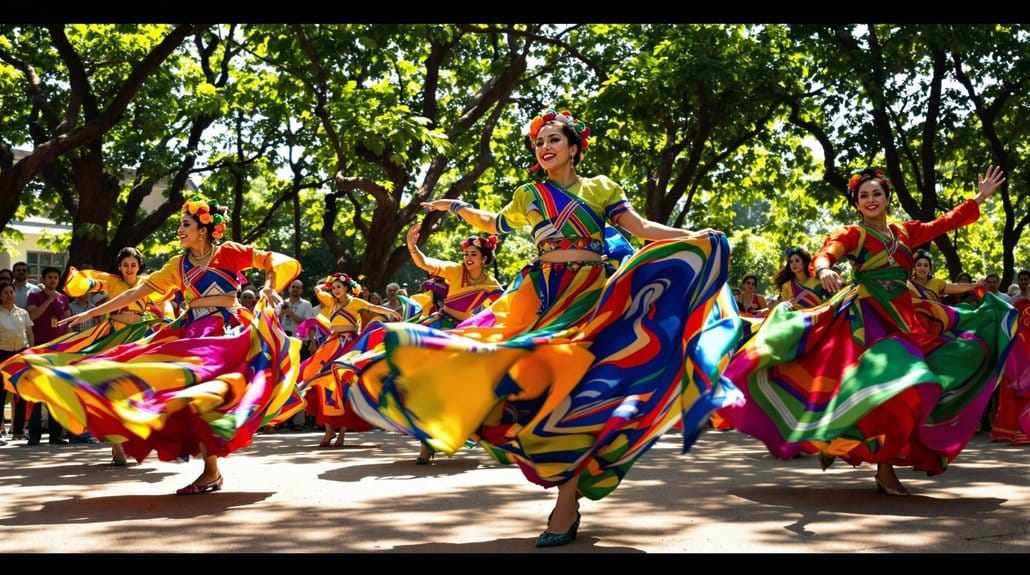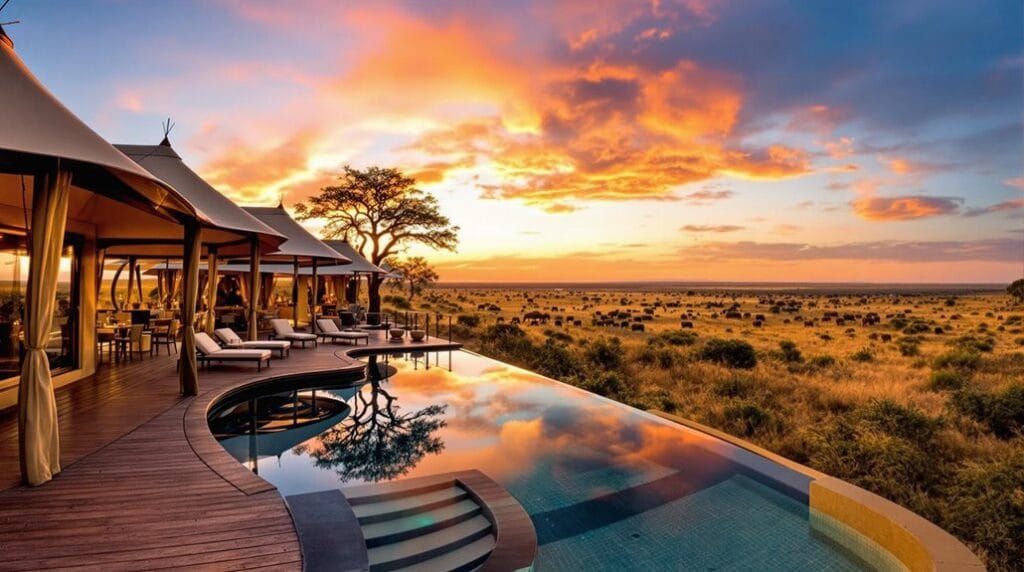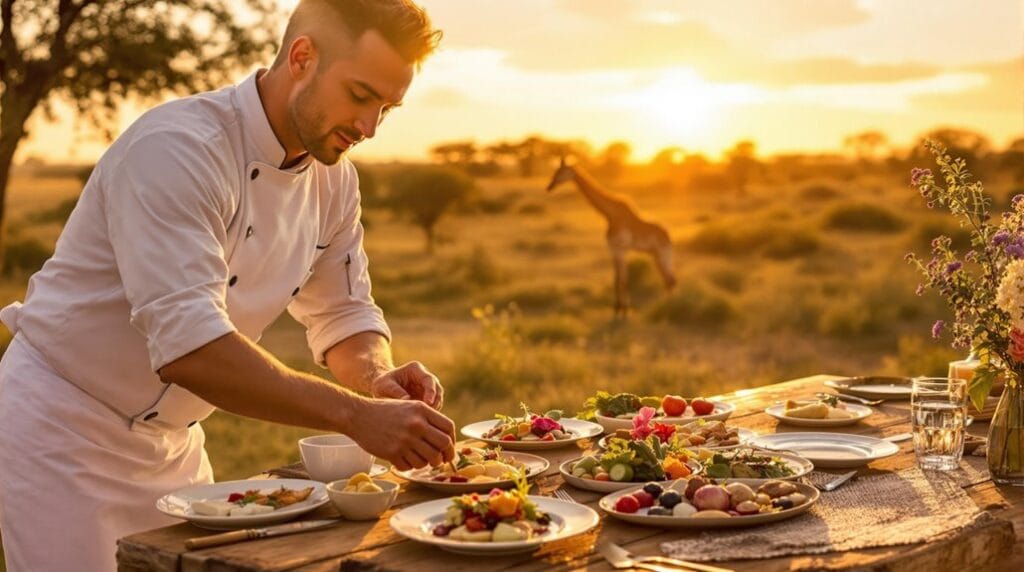When you explore African dance traditions, you're stepping into a world where movement tells stories and connects generations. Each dance form has its roots in local customs and rituals, reflecting the diverse cultures across the continent. You might wonder how these ancient practices adapt to modern influences while retaining their significance. As you consider the role of dance in community and identity, you'll uncover layers of meaning that resonate well beyond the movements themselves. What might you discover about the challenges and transformations shaping these vibrant traditions today?
Key Takeaways
- African dance traditions are rooted in ancient rituals, reflecting the spiritual and cultural lives of diverse communities across the continent.
- Traditional dances commemorate significant life events, fostering social connections and storytelling within communities while preserving cultural heritage.
- Contemporary dance practices fuse traditional styles with modern influences, showcasing Africa's cultural diversity and gaining international recognition.
- Dance serves as a medium for spiritual connection, emotional healing, and honoring ancestors, reinforcing community identity and continuity.
- Challenges include maintaining authenticity amidst commercialization and ensuring inclusivity, while fostering future generations' appreciation for these rich cultural expressions.
Origins of African Dance
African dance, rooted in ancient rituals and ceremonies, offers a window into the spiritual and cultural life of diverse communities across the continent. As you explore this vibrant art form, you'll discover how traditional dances reflect unique styles, shaped by the histories and identities of various ethnic groups. Each dance serves a specific purpose, whether celebrating a harvest, honoring ancestors, or marking essential life changes.
In these movements, you can sense the heartbeat of community expression, as dance acts as a crucial medium for storytelling and social connection. The rhythms resonate deeply within communities, fostering a sense of belonging and cultural heritage that's cherished across generations.
Observe how these dances evolve, reflecting historical and societal changes, yet remaining deeply rooted in their origins. They adapt, but the essence of their spiritual and cultural life remains intact.
You'll see that African dance isn't just performance; it's a living reflection of the resilience and creativity of communities, inviting you to engage with their stories and experiences. Through dance, you're not just an observer; you become part of a rich tapestry that binds individuals together in celebration and remembrance.
Traditional Dance Practices
In traditional African dance, you'll notice how each movement embodies the spirit of ritual celebrations and ceremonies, marking life's significant moments.
These dances not only honor ancestors but also reinforce community identity, as participants express shared values and stories through rhythmic patterns.
Observing these practices highlights their role in fostering cultural pride and unity, making them essential to the fabric of communal life.
Ritual Celebrations and Ceremonies
Celebrating significant life events through traditional dance practices reveals a vibrant tapestry of cultural expression within various communities. You'll find that traditional dance is essential to rituals and ceremonies, marking milestones like weddings, funerals, harvest festivals, and rites of passage. These performances honor ancestors and strengthen communal bonds, allowing you to connect deeply with your cultural heritage.
As you observe, the movements in these dances are grounded and rhythmic, echoing the heartbeat of the community. Each dance carries specific meanings unique to its region or ethnic group, often telling stories, myths, and values passed down through generations. This rich tapestry not only reinforces community identity but also guarantees continuity in cultural practices.
Participating in these ritual celebrations, you'll notice how inclusive they are. People of all ages and backgrounds come together, fostering a sense of belonging. Through traditional dance, you engage with spiritual forces and offer social commentary, enriching the cultural landscape.
In doing so, you help preserve crucial aspects of cultural heritage, ensuring that these vibrant traditions thrive for future generations to experience and celebrate.
Community Identity and Expression
While experiencing traditional dance practices, you quickly recognize how they serve as a powerful medium for expressing community identity. These dances are more than just movements; they embody the essence of a community, connecting individuals through shared experiences and collective energy.
- Celebrate significant life events like weddings and funerals
- Reflect unique regional styles and social values
- Convey stories, myths, and historical narratives
- Foster inclusivity and participation across all ages
Every step, every rhythm, tells a story, reinforcing cultural pride and continuity. When you watch a traditional dance, you see how each style is rooted in its community's identity, with grounded stances and distinct patterns that echo the values and history of its people.
The accompanying music enhances this connection, creating an atmosphere where performers and audience members share in the experience.
As you participate, you find that traditional dance practices welcome everyone, allowing you to engage and express your community identity together. This vibrant form of art not only entertains but also strengthens bonds, ensuring that the rich tapestry of cultural heritage is passed down through generations.
Contemporary Dance Trends
Contemporary dance trends in Africa reveal a vibrant fusion of traditional and modern styles, reflecting the continent's rich cultural tapestry. As you explore these contemporary African dance styles, you'll notice how they blend elements from hip-hop, jazz, and contemporary ballet, creating a dynamic expression of African identity that resonates globally.
Take, for example, Azonto from Ghana and Shaku Shaku from Nigeria. These styles gained international popularity through social media and music videos, showcasing the evolution of dance as both an art form and a cultural statement.
Dance competitions and festivals, like the National Arts Festival in South Africa, celebrate this innovation, encouraging choreographers to push boundaries while staying connected to their cultural roots.
Moreover, contemporary African dance troupes, such as the Dance Theatre of Nigeria, tackle themes of social justice and cultural identity, using dance as a powerful platform for dialogue.
With the rise of digital platforms, these contemporary African dance trends reach wider audiences, fostering cross-cultural interactions and inspiring new generations of dancers.
Cultural Significance of Dance
Dance in African cultures isn't just an art form; it's a vital expression of community values and beliefs. It connects individuals, fostering a sense of belonging and shared identity.
As you observe these vibrant expressions, consider how they encapsulate a multitude of experiences:
- Each dance tells stories of life changes, like rites of passage from youth to adulthood.
- The communal aspect of dance invites social interaction, allowing emotions to flow freely among participants.
- Unique dance styles serve as a living archive, preserving cultural heritage and transmitting teachings across generations.
- Ritual celebrations often merge with recreational dances, reflecting collective experiences and reinforcing cultural identity.
Through these movements, you witness more than just performance; you engage in a dialogue that resonates with the heart of the community.
The rhythm and energy create bonds, encouraging connection and understanding. Each step and gesture carries the weight of history, revealing the profound significance of dance in shaping social interactions and cultural narratives.
In this way, dance transcends mere entertainment, becoming an essential thread in the fabric of African life.
Dance as Social Commentary
In the heart of many African communities, dance serves not just as entertainment but as a powerful form of social commentary that reflects the collective consciousness. Through ritual performances, like the Gelede ritual featuring the Great Efe mask, dancers honor both Earth Mother and community elders, merging art with social purpose.
As you watch, you'll notice how dancers sing praises of individuals in order of seniority, transforming each movement into a social statement that encapsulates the community's values and hierarchies. These performances are more than mere displays; they become platforms for addressing contemporary issues while reinforcing cultural narratives.
When spectators join in, free participation fosters communal engagement, creating a vibrant sense of belonging and shared cultural identity. You can feel the energy in the air as complex messages about social order, morality, and community relationships unfold through dynamic movements.
In this way, dance acts as a mirror to society, allowing for a rich exchange of ideas and emotions. It invites everyone to reflect on their place within the community, ensuring that the rhythm of life resonates deeply with the essence of who they are.
Spiritual and Religious Contexts
As the rhythms of social commentary resonate through the community, they often intertwine with the spiritual and religious dimensions of African dance. This dance form isn't just a physical expression; it serves as a profound medium for worship and connection with the divine.
- Reflects love and praise for God, as highlighted in scripture
- Facilitates a connection with spiritual forces during rituals
- Honors ancestors and community elders, reinforcing cultural continuity
- Embodies the ties between the living and the deceased
In many African cultures, dance is integral to rituals that deepen community identity. For instance, Yoruba priests enter trances, channeling divine messages that guide their people. These performances during religious ceremonies honor ancestors, ensuring a vibrant cultural legacy.
Spirit possession, as seen in the Bori cult among Hausa women, further illustrates how dance connects the living with ancestral spirits. It strengthens bonds within the community, embodying complex human relationships.
Ultimately, African dance transcends mere movement; it's a sacred practice that nurtures belonging, intertwining spiritual forces with the rich tapestry of shared identities and histories.
Therapeutic Uses of Dance
While many might view dance merely as a form of entertainment, it plays an essential therapeutic role within various African societies. In communities like the Hausa, women engage in dance not just for joy but for healing. Through Bori cult practices, they experience emotional release and address health issues via dance movements that connect them to their inner selves.
Similarly, Jukun elders employ Ajun ceremonies, utilizing dance as a method for exorcising evil spirits, especially those impacting women. This highlights dance's significance in communal healing, reinforcing social bonds while providing individual relief.
In initiation ceremonies, the teaching of songs and dances serves therapeutic purposes, fostering psychological well-being as participants learn to express their identities through movement.
Kalabari female spirit mediums further illustrate this connection; their healing rituals intertwine dance and song, showcasing how artistic expression can enhance mental health.
These practices emphasize that dance, rich in cultural meaning, transcends mere entertainment. Instead, it emerges as a crucial tool for healing, fostering a sense of belonging and community among those who participate, ultimately supporting emotional and psychological well-being.
Connection to Ancestral Spirits
You might notice how dance becomes a conduit for connecting with ancestral spirits in African traditions.
Through ritual festivals and masquerades, performers not only embody these spirits but also guide the living in steering their cultural identity.
This intricate relationship reinforces community bonds, reminding everyone of their shared heritage and the ongoing influence of their ancestors.
Ancestral Guidance Through Dance
In the vibrant tapestry of African dance traditions, the interplay between the living and their ancestral spirits unfolds through dynamic movements and rhythmic expressions. Dance becomes a powerful medium for connection, allowing you to experience the guidance of your ancestors during ritual festivals.
- Ancestral spirits temporarily possess dancers, creating a bridge to the spiritual domain.
- Masquerade performers embody these spirits, guiding the community through their movements.
- Rituals renew relationships, reinforcing cultural heritage and community identity.
- Dance fosters social cohesion, uniting individuals in shared expression.
As you participate in these ceremonies, you feel the energy of your ancestors flowing through you. Each movement reflects a history, a story, and a legacy that transcends generations.
This connection not only honors the past but also strengthens your community identity, making you an essential part of the cultural heritage. In this communal setting, everyone shares a collective experience, reinforcing bonds and nurturing belonging.
Through dance, you embrace the wisdom of your ancestors, allowing their guidance to inform your present and shape your future. This sacred interaction elevates the art of dance into a profound ritual, critical for maintaining the fabric of social cohesion within the community.
Ritual Festivals and Connection
Ritual festivals serve as vibrant crossroads where the living and ancestral spirits meet, creating a dynamic atmosphere charged with energy and purpose. During these festivals, you'll witness how dance transcends mere movement, acting as a crucial medium for honoring ancestors. Each step and rhythm resonates with the essence of those who came before, forging a deeper connection to your cultural identity.
As masquerade performers embody returning ancestors, they guide the living, reinforcing community ties through their expressive movements. You can feel the palpable sense of belonging, as these gatherings renew the intricate relationships that define your culture. The artistic expressions showcased during these events aren't just performances; they encapsulate the very spirit of your heritage.
In this sacred space, social cohesion flourishes, as shared experiences foster unity among participants. By invoking the presence of ancestors, ritual festivals weave together the past and present, reminding everyone of their place within the continuum of life.
Embracing these traditions, you help sustain the legacy of your ancestors, ensuring that their spirits remain an integral part of your community's journey.
Masquerades and Spiritual Representation
Amidst the vibrant tapestry of African culture, masquerades stand out as powerful expressions of spiritual representation, bridging the gap between the living and the ancestral domain. These mesmerizing performances connect you to your ancestors, allowing a dialogue that transcends time and space during rituals and community festivals.
- Elaborate Masks: Symbolizing the spiritual presence of ancestors.
- Community Participation: Fostering unity and shared identity.
- Cultural Heritage: Renewing and restating complex human relationships.
- Guidance from Ancestors: Reinforcing the belief in their protection.
As you witness a masquerade, you can feel the energy of the ancestors guiding the dancers, reminding you of the deep-rooted beliefs that shape your identity. Each movement, each beat, reverberates with the history of your community, reflecting the crucial role of dance in maintaining cultural heritage.
The rituals performed during these events do more than entertain; they serve as a reminder of the enduring connection between past and present generations. In these moments, you become part of a larger narrative, one that celebrates the richness of your culture and the crucial role your ancestors play in your community's journey.
Participation and Inclusivity
African dance traditions thrive on participation and inclusivity, welcoming individuals from diverse backgrounds and age groups to join in the celebration. You'll find that these vibrant dance forms often require no prior experience, making it easy to engage in communal festivities. Community classes and workshops foster learning, encouraging cultural exchange among participants.
| Dance Style | Key Characteristics | Community Impact |
|---|---|---|
| Traditional Dance | Colorful costumes, rhythmic beats | Builds social connections |
| Contemporary Dance | Fusion with modern styles | Encourages creative expression |
| Ceremonial Dance | Spiritual significance | Strengthens cultural identity |
| Social Dance | Partner-based, improvisational | Enhances community bonds |
| Storytelling Dance | Narratives through movement | Preserves cultural heritage |
The rich variety of dance styles not only showcases unique cultural identities but also invites active participation from the audience through traditional instruments like drums and rattles. In this environment, you can express yourself freely, building lasting connections with others. The participatory nature of African dance guarantees that everyone finds a place in the rhythm of community life, making it a truly inclusive experience.
Challenges and Future Directions
While participation and inclusivity thrive in African dance traditions, several challenges threaten their future. The interplay between traditional values and modern demands creates a complex landscape where the very essence of these cultural expressions is at stake.
- Resistance in spiritual settings: Historical undervaluation of dance by religious authorities still lingers.
- Commercialization risks: Traditional performances adapted for tourism often lose their spiritual significance.
- Bishops' restrictions: Even with post-Vatican II reforms, many African liturgies struggle to embrace dance fully.
- Tension in evolution: Balancing traditional roots with contemporary performance styles can dilute authenticity.
As you navigate this vibrant world, recognize the ongoing advocacy efforts that aim to reclaim dance as a biblically accepted form of veneration. By embracing its spiritual significance, you contribute to its importance.
Yet, be mindful of the commercialization that alters the original context of these dances, transforming them into mere spectacles. Ultimately, the preservation of African dance traditions requires a collective commitment to honor their roots while allowing for organic evolution.
This journey isn't just about preserving history; it's about ensuring these cultural expressions continue to resonate within communities for generations to come.
Frequently Asked Questions
What Is the Cultural Significance of African Dance?
African dance holds deep cultural significance, serving as a powerful storytelling medium that reflects your community's values and beliefs.
It fosters community bonding, allowing you to connect with others through shared experiences. As a form of spiritual expression, it reinforces identity representation and historical preservation, ensuring traditions are passed down through generations.
Each movement you engage in not only celebrates life changes but also strengthens cultural ties, creating a sense of belonging within your community.
How Does Dance Bring Cultures Together?
Have you ever felt the pulse of a dance that draws you in, urging you to move?
Dance creates community bonding through rhythmic expression, weaving together diverse cultures in a tapestry of shared heritage. It fosters cultural exchange, inviting everyone to participate and celebrate together.
As you join in, you contribute to a sense of social unity, breaking barriers and forging connections that resonate across time and space, leaving you feeling truly belonging.
What Did Many African Dance Rituals Celebrated?
Many African dance rituals celebrate community celebrations, marking significant life changes like weddings and funerals.
You'll notice how these dances create spiritual connections, honoring ancestors while forging bonds among participants.
Harvest festivals are vibrant occasions where gratitude for the land is expressed through rhythm and movement.
Each dance serves not just as entertainment but as a powerful reminder of shared values, resilience, and the deep-rooted culture that unites everyone in the community.
What Are Five Features of African Dance?
Did you know that over 300 distinct African dance forms exist, each rich in tradition?
African dance features intricate rhythm patterns, allowing your body movements to reflect a community's heartbeat. You'll notice storytelling elements woven into the choreography, sharing myths and values.
Community involvement is essential, as everyone participates in celebrations or rituals.
Conclusion
As you reflect on the vibrant tapestry of African dance traditions, you can't help but see how each movement weaves together the threads of history, culture, and community. These dances aren't just performances; they're living legacies that connect you to ancestral spirits and shared narratives. Embracing both tradition and innovation, African dance invites you to join the rhythm of resilience, ensuring that the heartbeat of these rich identities echoes through generations to come.








